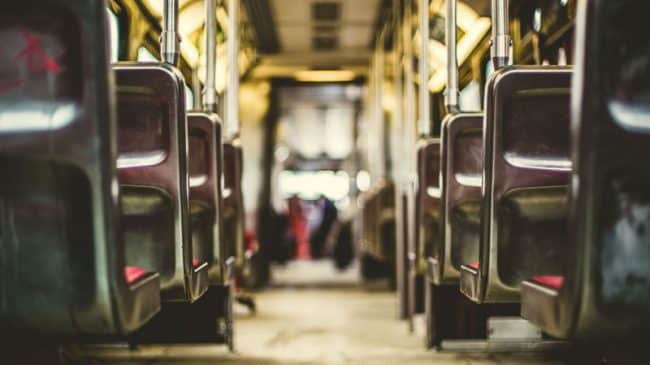Improving transit service for commuters in the nation’s capital is shaping up to be a hot-button issue in the D.C. mayoral election this November. Democratic nominee (and overwhelming favorite) Muriel Bowser has requested that the District Department of Transportation (DDOT) determine whether adding a dedicated bus lane on the congested 16th St. is a feasible solution or not.
The city’s S2 and S4 bus routes along the 16th St. corridor have witnessed a dramatic increase in ridership since 2009 from 16,000 to over 21,000 passengers per weekday. Rush hour bus trips now transport roughly half of all commuters on 16th Street. Unfortunately, this surging demand for transit has created severe problems for residents.
Bus operators have struggled to maintain adequate service for late-night commuters, many of whom wait an hour or longer for a bus which can accommodate them. Uneven bus schedules, or “bus bunching,” are another major problem on 16th St. Unpredictable traffic causes some buses to run late. Because late buses have to pick up a portion of those customers waiting for the next bus in addition to their normal load, they fall further behind in schedule. Since subsequent buses have fewer customers to pick up, they can quickly catch up to the late buses. This phenomenon leads to an inefficient use of bus space-overcrowding on some buses, underuse on others-and contributes to longer wait times for customers.
Though these problems are real, a dedicated bus lane would cause troubles of its own. By depriving drivers of an entire lane, it would lead to more congestion, wasted time and wasted fuel. And if the relatively empty bus lanes entice scofflaw drivers, prosecuting illegal parking could disrupt traffic. Either way, proposals calling for a dedicated lane ignore a much simpler, less risky, and potentially more effective solution.
Priority signaling and Intelligent Transportation System (ITS) upgrades would make service more cost-efficient, safer and free from congestion. S line buses could use radio/GPS emitters to send real-time speed and location information to a receiver near the signalized intersection. When an intelligent bus approaches a green light, the receiver automatically initiates a sequence that prolongs the green light allowing the bus and vehicles in parallel lanes to get through the intersection. Conversely, when an intelligent bus approaches a red light, it abbreviates the signal phase lengths of side streets to decrease its waiting time. Signal prioritization can give buses up to a 20-second lead over other vehicles without majorly slowing traffic.
ITS improvements are also relatively inexpensive. Initial costs average about $18,700 per-intersection and only $100 per-bus. As there are currently 42 morning rush hour buses passing through 14 intersections on the 2.7-mile stretch of road under consideration, installing ITS devices would cost D.C. roughly $265,000.
In addition to retrofitting buses with ITS devices, DDOT could construct interactive signboards to coordinate user waiting times. Lower income workers juggling two or three jobs often can’t leave for home until 10 or even 11 PM. Waiting for an entire bus cycle outside can be extremely inconvenient and even dangerous. ITS technology allows buses to relay automatically the time between stops to display panels, giving customers the information they need to make wise choices.
These innovative solutions have already enjoyed success in a variety of metropolitan areas. DeKalb County, GA-which contains part of Atlanta-began employing ITS technology in 1999. Since then, bus prioritization has been implemented at 27 intersections. Moreover, the system updates have increased and stabilized average speeds, not only for local buses, but also for motorists. Similarly, a pilot test involving 50 prioritized signals on the El Camino Real corridor near San Francisco reduced total intersection delays by 19.4%.
While 16th St certainly needs to accommodate a higher volume of buses, a dedicated lane would hurt more than help. It would also increase driver commute times and potentially cause a transit backlash. Transit should make getting to work easier for those who use it, not penalize those who don’t. A viable long-term solution must improve transit service while minimizing inconvenience to non-transit commuters. As such, signal prioritization and low-cost ITS updates are the right choice.
